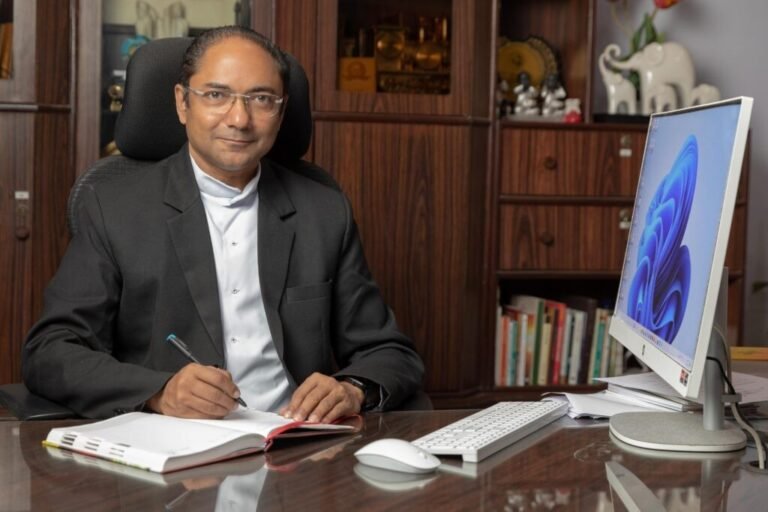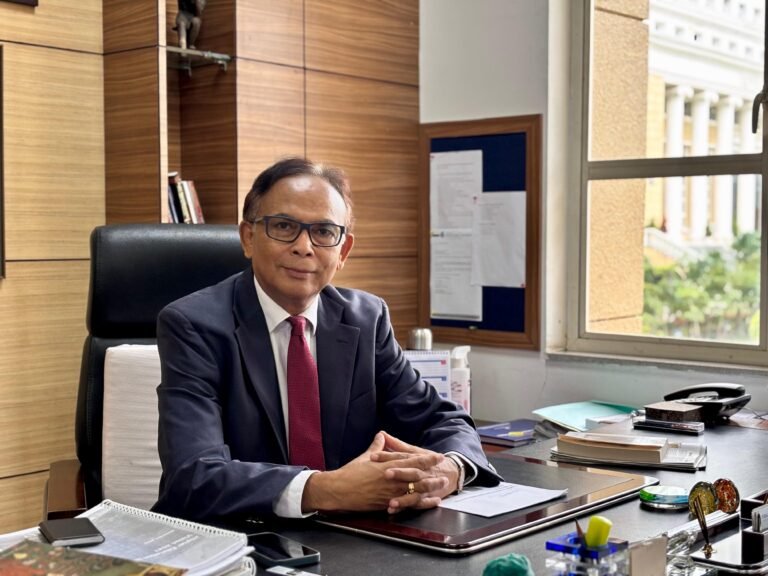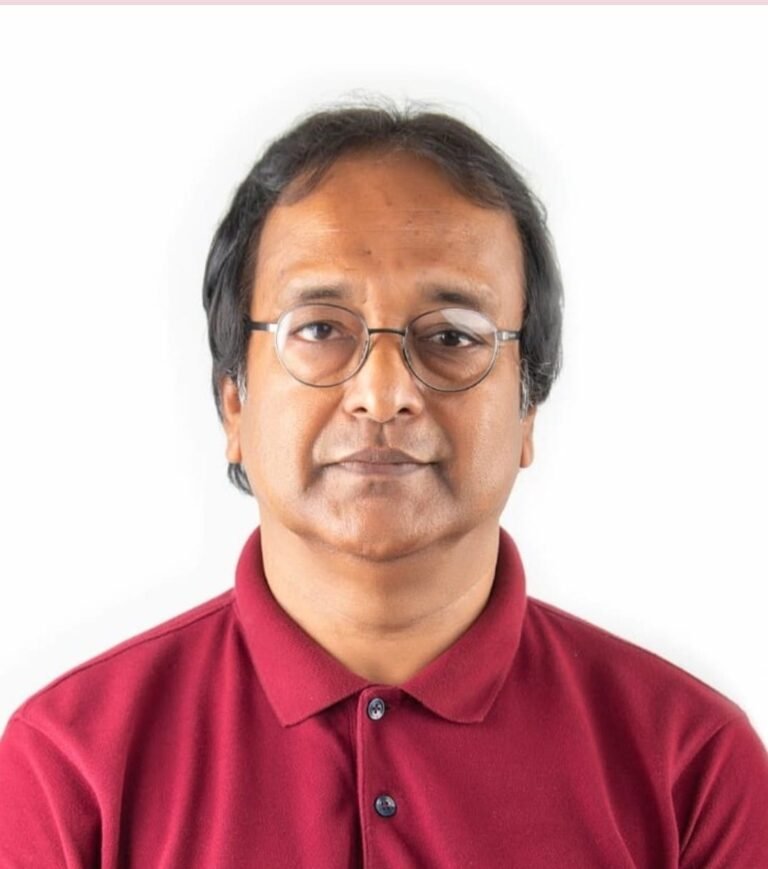AIIMS Guwahati: Shaping Medical Futures with MBBS, Super-Specialty Courses & AI Innovation
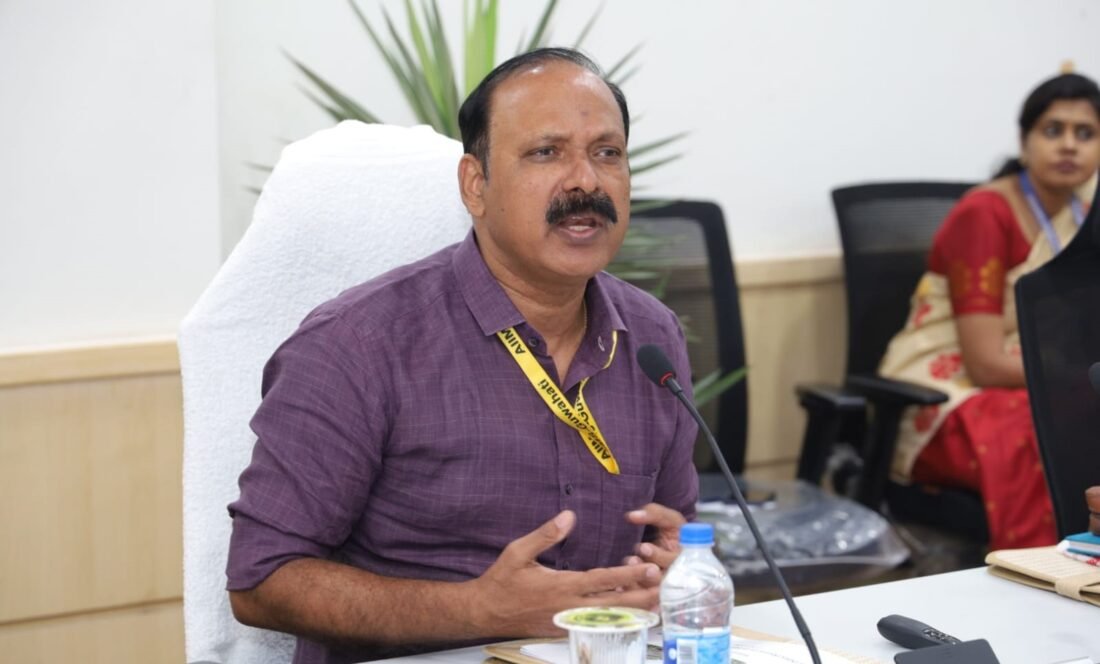
AIIMS Guwahati is fast becoming a top choice for students from Northeast India who dream of becoming doctors. With experienced teaching, modern labs, and a strong focus on research, the institute is helping bridge the gap in healthcare and education in the Professor Ashok Purnanik, Executive Director of AIIMS Guwahati, shares the institute’s vision for the future.
From expanding MBBS and postgraduate seats to introducing super-specialty courses and using AI in healthcare, Dr. Purnanik talks about how AIIMS Guwahati is setting high standards not just in patient care but also in academics.
He also shares a heartfelt message for young students from the Northeast: “Your roots are your strength. Don’t just aim to clear exams—aim to serve and lead.”
This is more than just a medical college—it’s a mission to empower local talent and improve healthcare for all.
1. AIIMS Guwahati is one of the newest additions to India’s premier healthcare institutions. What is your overarching vision for this institute over the next five years?
To establish AIIMS Guwahati as a benchmark of excellence in healthcare delivery, medical education, and translational research, while addressing the unique health challenges of the Northeast and contributing to India’s broader goal of equitable, accessible, and innovative healthcare. The institute has been set up with an aim of correcting regional imbalances in quality tertiary level healthcare and attaining self-sufficiency in graduate and postgraduate medical education. The Mission and objectives is to develop the Institute into a state-of-the-art facility that caters to the three-pronged approach adopted by the AIIMS institutions, namely, Quality Medical Education, Evidence based Patient Care, and Cutting-edge Research
2. How is AIIMS Guwahati aligning itself with the core values and excellence benchmarks of the AIIMS network across the country?
AIIMS Guwahati, as one of the newer institutions in the All India Institute of Medical Sciences network and is actively aligning itself with the core values and excellence benchmarks set by the older, more established AIIMS campuses—particularly AIIMS New Delhi—while also adapting to the unique health landscape of the Northeast.
3. Can you walk us through the current MBBS and other medical programmes being offered, and the expected intake in coming academic sessions?
We have MBBS, MD/MS, DM, Nursing and PhD courses being offered at present. The MBBS intake is 100 per batch currently.
4. What is the selection criteria and how does the curriculum at AIIMS Guwahati distinguish itself from other top medical colleges?
The selection criteria and curriculum at AIIMS Guwahati are designed to reflect the rigor, depth, and progressive orientation of the entire AIIMS network. The curriculum is designed after carefully considering curriculum of AIIMS Delhi and other AIIMS. We have core features aligned with other AIIMS like- Integrated Teaching, Early Clinical Exposure, Skills Lab and Simulation and Research Orientation. We are committed to provide a holistic learning environment that stirs critical thinking and precise judgment along with inculcating sympathy for the patients.
5. Is there a plan to introduce super-specialty or post-graduate medical education soon?We have already started Post graduation in almost all departments. Super speciality courses are started in Paediatric Neurology, Intervention Neuroradiology, Neuroanaesthesia and Critical care and Neurology. Other super speciality courses will soon be started.
6. AIIMS Guwahati is still in its growth phase. What is the status of the campus infrastructure—hostels, laboratories, OPDs, and clinical training facilities?
The 1st phase of infrastructure is almost completed. We have UG, PG and Nursing hostels. OPD,IPD and Medical College building is running smoothly along with lab facilities and we have training facilities like Simulation lab.
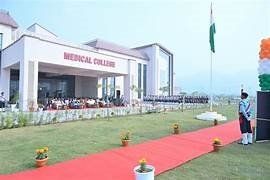
7. What efforts are being made to attract and retain top faculty members and medical professionals, especially in a region that has historically seen shortages?
AIIMS Guwahati is taking a multi-pronged strategic approach to attract and retain top-tier faculty and medical professionals—addressing not only the national shortage of qualified educators but also the unique challenges of working in the Northeast, a region historically underserved in terms of healthcare infrastructure and manpower. Faculty appointments are made under the Central Government after rigorous selection process considering their dedication to work. Faculty have the autonomy in research, publishing, and academic innovation, similar to AIIMS Delhi and other top institutes. Dedicated funding support through Intramural research grants and access is there to ICMR, DBT, DST, and AIIMS network grants. Young and dynamic faculty are being given leadership roles early, due to the nascent structure of the institution. Transparent career progression paths are supported by measurable academic and research output.
8. What role do you see AIIMS Guwahati playing in transforming the healthcare landscape of Northeast India?
AIIMS Guwahati is poised to play a transformative role in the healthcare landscape of Northeast India The Northeast has long faced challenges like limited access to tertiary care, specialist shortages, and under-equipped healthcare infrastructure. AIIMS Guwahati will directly address these issues by providing world-class tertiary care locally, reducing the need for patients to travel to metros like Delhi or Kolkata. Offering specialized treatments for conditions prevalent in the region, from tropical diseases to genetic disorders. Producing Skilled Healthcare Professionals AIIMS Guwahati will be a hub for training top-tier doctors, nurses, and paramedics who understand the local languages, cultures, and health issues unique to the Northeast. They will be more likely to serve in the region due to their roots or familiarity, helping curb the brain drain. Boosting Medical Research & Innovation With its emphasis on research: AIIMS Guwahati can lead region-specific studies on diseases like malaria, cancer clusters, HIV/AIDS and lifestyle-related disorders. It can foster collaboration with institutes like IIT Guwahati and regional health centres, creating a health-tech and bio-research ecosystem.
9. Is there any specific outreach programme or initiative to serve rural and tribal communities of Assam and nearby states?
Yes, we have many outreach programme ongoing to serve the community and tribal area. The institute has rural and urban health centres adopted under it where interns and postgraduates are posted and multispeciality clinic is run by AIIMS Guwahati. Health camps are organised by institute for various health issues and patients are referred for diagnosis and treatment at AIIMS Guwahati. We have also piloted Drone based health care delivery for remote locations. Community Medicine Department actively collaborates with local health workers and NGOs. We also have teleconsultation networks with peripheral hospitals.
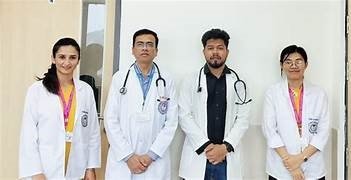
10. What are the key challenges in delivering tertiary care in this region and how is AIIMS working to bridge those gaps?
Delivering tertiary healthcare in Northeast India comes with a unique set of challenges — geographical, infrastructural, socio-economic, and human-resource related. However, AIIMS Guwahati is strategically addressing many of these barriers with a long-term vision. There is Shortage of Advanced Medical Infrastructure in this region and we are working towards providing these services at an affordable price. Regional Access to Advanced Tertiary Care like oncology, neurosurgery, interventional radiology, paediatric neurology, urology and other facility is being provided. Patients from Assam, Arunachal Pradesh, Meghalaya, Nagaland, and Mizoram now access high-end care closer to home. AIIMS is also Fostering a culture of research and academic growth to retain top medical talent in the region. AIIMS Guwahati is becoming a referral hub for difficult cases from smaller district and community hospitals. The institute is training staff in local languages and customs to improve communication and patient trust.
11. How is AIIMS Guwahati integrating medical research into undergraduate education?
Students are taught about research methodology in their curriculum extensively. They are encouraged to undertake STS Projects under faculty as Guides. Under the Department of Community and Family Medicine they have 1 moth of research related posting where they are given research topics to work on.
12. Is there any collaboration in the pipeline with IIT Guwahati, or other national/international institutions for research, AI in healthcare, or medical technology?
AIIMS Guwahati is located in proximity to institutes like IIT and NIPER, and this has paved way for research innovations and collaborations and has brought in amalgamation of technology and medical facility. We have collaborations with other national and international agencies too. Research projects of National Importance and Clinical importance being funded by various Govt. organizations like ICMR, DBT,DST are being undertaken in the institute. Academic events and research programs are conducted all-round the year for capacity building of faculty and students.
13. Can you share any ongoing or upcoming public health research that focuses on region-specific issues like cancer, anaemia, maternal health, or vector-borne diseases?
AIIMS Guwahati—while still a relatively young institution—is actively engaged in a number of ongoing and upcoming public health and biomedical research initiatives that address region-specific concerns such as cancer, anaemia, maternal and neonatal health, and vector-borne diseases across Northeast India. We have many ongoing research on Tobacco use, substance use, cancer, maternal and child health and mental health. Many National Health Research Priority Projects supported by ICMR are ongoing.
14. Where do you see AIIMS Guwahati in the next decade, both in terms of patient care and academic leadership?
The institute intends to start other cutting edge, quality services like cancer care, stroke care, transplant medicine, genetics, wholesome child development care etc. in near future. As the institute will grow over the years, it will be definitely bring a change in the health sector for North East region. We envision to become the centre of excellence for Artificial Intelligence (AI) in healthcare for the North Eastern Region. The aim is to promote creation and use of AI based solutions in Health. AI application in the form of Robotic Surgery, diagnostic algorithm, Stroke Imaging, Tumour Grading will be used. Future plan also include establishment of Regional trauma evacuation centre (Helipad).
Also in plan is to connect rural and semi-urban populations with AIIMS Guwahati via air ambulances, health tourism shuttles.
15. Any message you’d like to share with aspiring medical students from the Northeast region and across India who dream of joining AIIMS Guwahati?
AIIMS Guwahati represents more than just a medical college — it symbolizes a new chapter in India’s healthcare journey, especially for the Northeast. To those of you aspiring to join AIIMS Guwahati-I would like to say –“Believe in your roots”- Coming from the Northeast or any corner of India is not a limitation — it’s your strength. Your background gives you a unique perspective and resilience that medicine deeply needs. “Prepare with purpose”- The journey to AIIMS is tough, but every hour of study, every sleepless night, and every sacrifice adds up. Don’t just aim for a seat — aim to serve, heal, and lead. AIIMS Guwahati is not just a launch pad for personal success — it’s a platform to impact lives, improve rural healthcare, and make a real difference in underserved communities. Stay curious and compassionate. The best doctors aren’t just the most knowledgeable — they’re the ones who listen, who care, and who treat patients as people first. AIIMS Guwahati is not just a hospital — it is a transformational anchor institution that will. It will Reduce health inequality in Northeast India, empower local talent, and create a sustainable healthcare ecosystem rooted in regional realities.

